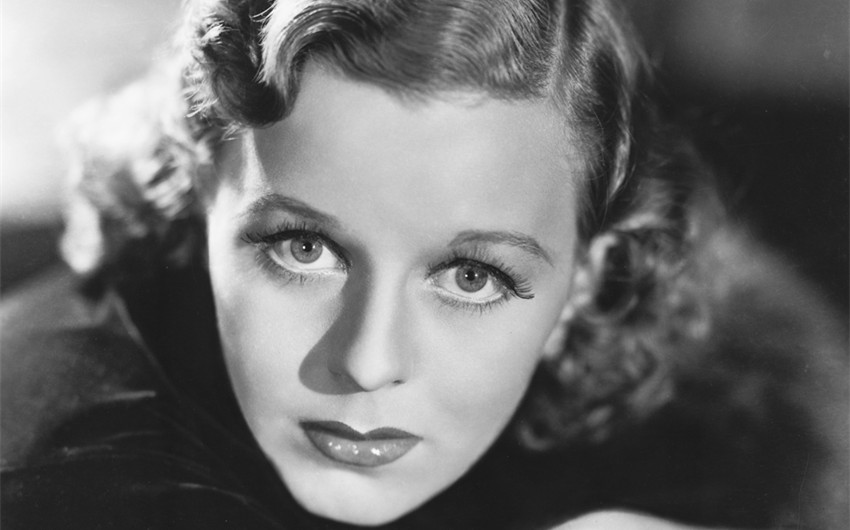What Margaret Sullavan’s Net Worth Reveals About Old Hollywood Stardom
What does Margaret Sullavan’s net worth actually tell you? If you’re like most people, you might Google that question expecting a number—maybe to compare her to other stars of her era, or just out of curiosity. But the more you look into it, the clearer it becomes: her value wasn’t just measured in dollars. Instead, it was shaped by her fierce independence, her refusal to conform, and the price she paid—personally and professionally—for choosing meaning over marketability.
Margaret Sullavan: A Star Who Never Played the Game
You probably don’t hear Margaret Sullavan’s name as often as you hear Katharine Hepburn’s or Bette Davis’s. But in the 1930s and early 1940s, she carved out a singular place in Hollywood. Born in 1909 in Norfolk, Virginia, she began her career on the stage before moving into film, debuting in Only Yesterday (1933). Her performances were emotionally rich, understated, and authentic—often described as luminous without being flashy.
What set her apart wasn’t just her talent. It was her attitude. You can think of Sullavan as someone who never really surrendered to the Hollywood machine. She didn’t chase fame, didn’t crank out dozens of films a year, and was known for choosing roles that resonated with her personally. In a time when actresses were often pressured to mold themselves into glamorous archetypes, Sullavan kept herself just out of reach—enigmatic, reserved, and real.
Her limited filmography—only about 16 films—wasn’t due to lack of demand. In fact, she turned down more roles than she accepted. That choice came at a financial cost, but it helped cement her as a serious actress rather than a commodified celebrity.
How Much Was Margaret Sullavan Worth—And To Whom?
So what was Margaret Sullavan’s net worth when she died in 1960? Estimates range between $1–2 million. Adjusted for inflation, that would be roughly $10–20 million today. But numbers don’t tell the whole story. To understand where her wealth came from—and what it represented—you need to look at the choices she made and the system she worked within.
Film Salaries—Selective but Significant
Sullavan earned most of her income from film roles, but unlike many contemporaries who took on project after project, she chose hers carefully. At her peak, she could command a salary of around $3,000 to $5,000 per week—a substantial amount for the time. For leading roles, this could amount to $50,000 or more per film. In today’s money, that’s the equivalent of about $500,000 to $800,000 per role.
Compared to stars like Joan Crawford or Bette Davis—who sometimes made over $200,000 per year in the 1930s and 1940s—Sullavan’s total income was likely lower. But that was by design. She wasn’t interested in becoming a box office queen. Instead, she prioritized the quality of her work and her autonomy.
This selectiveness enhanced her credibility but limited her lifetime earnings. Still, the films she did make—such as The Shop Around the Corner and Three Comrades—are considered classics. That long-term cultural value is a kind of wealth that doesn’t show up on balance sheets.
Stage Work and Early Career Earnings
Before Hollywood came calling, Sullavan was already a respected name on Broadway. She worked with the University Players and caught the attention of director Frank Borzage, who cast her in her first film. Her stage roles didn’t pay Hollywood rates, but they built the foundation of her reputation.
In the 1920s and early 1930s, stage actors might earn a few hundred dollars a week—a decent income, but not one that accumulated wealth quickly. However, Sullavan’s time in theater gave her something more valuable than money: creative discipline and control over her image.
Unlike many of her film-era peers, she didn’t emerge as a product of the studio system. That meant she entered Hollywood with more leverage than most—enough to push back against the standard star-making machinery that shaped so many others.
Real Estate and Personal Investments
There’s limited public information about Sullavan’s property holdings, but it’s believed she owned a home in California and possibly additional properties on the East Coast. At the time, real estate was both a lifestyle choice and a financial investment for stars, and Sullavan likely followed suit.
What stands out is that she didn’t flaunt her wealth. There were no extravagant mansions, lavish public parties, or publicity stunts. Her lifestyle, by all accounts, was tasteful and understated. She valued privacy over opulence—a preference that may have kept her finances more stable, but also less visible.
It’s also worth noting that during this era, many female stars had financial advisors or male relatives who managed their money. There’s no clear record of how Sullavan handled her own finances, but given her independent nature, it’s not hard to imagine that she had a hand in making key decisions.
Residuals and Contract Terms
One major difference between classic-era stars and modern celebrities is how they were compensated long-term. Today, you’re used to actors receiving residuals from syndication, home video, and streaming. In Sullavan’s time, those revenue streams didn’t exist—or, if they did, they favored the studios heavily.
Sullavan worked primarily under contract with Universal and later MGM. These contracts often included flat fees, and unless an actor negotiated otherwise, they rarely saw additional income after a film’s release. There’s no record that Sullavan secured unusually favorable terms, though her status may have allowed her to negotiate better-than-average rates.
Even so, her income from each film was likely a one-time payment. That means her net worth had to be built through strategic choices—not passive income from her catalog of work.
Final Years and Estate Value
Sullavan’s life ended tragically in 1960, when she died at age 50 from a barbiturate overdose. At the time, her estate was modest by Hollywood standards—estimated around $1 million. But by then, her film career had slowed significantly. She’d returned to the stage in the 1950s and focused more on family and personal life.
She had four children, including Brooke Hayward, who would later become a writer and actress herself. It’s unclear how much of Sullavan’s estate passed to her family, or how it was managed after her death. What is clear is that the public’s perception of her shifted. She became less of a box office name and more of a respected, almost mythic figure—someone who symbolized a different kind of stardom.
Her value as an actress grew posthumously. Today, her performances are studied in film classes and cherished by fans who appreciate subtle, emotionally intelligent acting. That long-term artistic worth, while hard to quantify, far exceeds any dollar figure.
What Her Story Still Teaches You
When you ask about Margaret Sullavan’s net worth, you’re really asking something deeper: what is an artist’s legacy worth? Sullavan never chased the biggest paycheck or the brightest spotlight. She cared about integrity, control, and depth—qualities that didn’t always translate into massive wealth but left a lasting impression.
Her story reminds you that net worth isn’t just about assets. It’s also about how someone lived, what they chose to value, and how they’re remembered. In that sense, Margaret Sullavan’s worth might be far greater than any headline number suggests.
If you’re looking for more than numbers—if you’re curious about what truly lasts—her life offers a quiet but powerful answer.
Featured Image Source: imdb.com







